3 GENETIC RESOURCES OF KAZAKHSTAN CAMELS
Kazakhstan is the center, where it is possible to breed two types of camels: one-humped, dromedaries and two-humped, Bactrians, and also their interspecific hybrids.
One-humped and two-humped camels are distinguished among each other not only in their number of fat humps, but also in their biological range. The range of dromedaries are hot deserts of subtropical and tropical zones, and that of Bacrtians - deserts and steppes of Kazakhstan, Mongolia, Siberia and China – places with long and severe winters.
The isolation of these ranges is not casual, and it cannot be explained only by the economic reasons of efficient breeding of a certain camel type in a certain zone. The reason here is of a deeper biological character. The description of typical two-humped and one-humped camels bred in Kazakhstan is given below.
Generally, the following characteristic features should be noted. Dromedaries are characterized by a head with a very prominent not wide forehead, prolonged facial bones, which form a humpy nose profile. The neck of dromedaries is long and very agile, with a well-developed muscularity. When connected with the body, the neck is merging with the wither, the edge of which is connected with the hump’s base, the body is deep, dense, relatively short, the breast pad is well-developed, long and wide. The hump of well-fed camels forms a cone, rounded to the top, reaching 30-40cm above the back; it is rounded at the bottom, and to the top it can be slightly pressed from the sides. The extremities are long, muscular. The front paws are bigger than the hind ones. The characteristic and strictly fixed peculiarity of overgrowing is complete absence of fur on the fore shoulders (culottes), so typical for Bactrian’s and hybrids, and presence of fur on shoulder-blades – epaulets, prolonged by 10-15 cm from the level of the main fleece, beginning on the wither and ending sharply horizontally on the elbow level, which are absolutely absent in Bactrian’s and hybrids. Dromedaries have no fringe, so typical for Bactrian’s and hybrids; the mane is thick, wide, short, ending in the middle of the neck. The fur on the lower edge of the neck is very typical for dromedaries, that fur being formed of comparatively short and thick hair, beginning from the middle of the lower jaw, having the form of a two-circled crop (goitre) and ending much lower the upper third of the neck. By the character of hair pigmentation, dromedaries can be either one-colored, or with the mane, beard, epaulets and lower parts of extremities darker than the main fleece, or vice versa, lighter.
Unlike dromedaries, Bactrians have a head, wide in eyes, with relatively short facial bones, because of which their muzzle seems to be a bit sharp. Their neck is shorter than that of dromedaries, but more bent, from the sides it is narrower. Well-fed camels have the upper edge of their neck merged with the base of the front hump, and to feel the withers is impossible. Between the bases of the front and back humps there is a back of 20-40 cm length, which remains free and not filled with fat even in well-fed camels. The basis of the back hump ends in the line of iliac bones. The main characteristic feature of the Bactrian’s exterior, in comparison with dromedaries, is a longer body with relatively short legs, with the body being prolonged due to its middle part – the back and the large belly; shoulders and especially the sacrum are comparatively weak-developed. The layer of cornified epithelium on the breast pad and paw soles of Bactrian’s is developed weaker than that in dromedaries. Bactrian’s, being the animals of a more northern climate, are overgrowing with good fleece. Bactrian’s winter overgrown is original. On their forehead Bactrian’s have a fringe (vertically sticking out hair in the form of a rosette). Beginning from the back of their head, along the upper edge of their neck there goes a long, wide mane, hanging down on both sides, formed of very rough hair. Along the whole lower edge of their neck there stretches the beard (the lower mane) consisting of rough hair, reaching 60 cm in males (in females it is shorter). Unlike dromedaries, Bactrians have a very developed furring on fore shoulders, the so called culottes, beginning on the level of shoulder-blades and are hanging down to the wrists, forming an extremely magnificent garment of males. The hump tops are covered with long rough hair, hanging down on both sides. Unlike dromedaries, the milk yield of Bactrian females is not high.
According to recent data, in Kazakhstan there are raised three breeds of Bactrian’s: the Kazakh breed, the Kalmyk breed and the Mongolian breed, and two breeds of dromedaries: the Turkmen breed and the Kazakh breed. The general data on these breeds are given below in conformity with FAO requirements, with some additions.
3.1 Kazakh Bactrians
Colour. The prevailing colours of Kazakh Bactrian breed camels are greyish-brown, light-brown, dark-brown and light-yellow.
Exterior and live weight. The exterior of camels is characterized by body dimensions, such as the height between humps, the slanting body length, the breast circumference and the metacarpus circumference. Adult Kazakh Bactrian female camels’ dimensions are 178,2-154,4-236,0-20,6 cm (first grade), 192,0-166,0-247,0-21,4 cm (elite grade) and 162,8-144,6-218,4-18,7 cm (second grade), correspondingly (Fig. 2 - 3). Their live weight varies from 500 kg to 700 kg. The lactation period is 545 days. The milk yield per 12 month lactation is from 500l to 2000l, with average fat content being 5,5%.The average milk density is 1,029 ( 1,028-1,032). The fleece weight varies from 5,0 kg to 7,0 kg.
The live weight of tupping camels varies from 700 kg to 1000 kg. Their average body dimensions are 190-175-250-25 cm. The fleece weight of tupping camels varies from 8 kg to 15 kg. In the Kazakh Bactrian breed there are distinguished two independent intrabreed types: the meat and fleece type and the meat and milk type.
Figure 2 - The meat and milk type Kazakh Bactrian’s have become widely-spread in South-Kazakhstan, Kzyl-Orda, Mangyshlak and Atyrau regions of Kazakhstan. The average live weight of males is 670 kg and that of females – 580 kg. The wither height (between humps) in males is 179cm and that in females – 173 cm. The fleece weight in adult males is 8 kg and that in females – 5,4 kg. The milk yield of females per 12 month lactation is 1450 kg, with fat content being 5,7%. The gestation length in Kazakh Bactrian females is 415 days.
Figure 3 - The meat and fleece type Kazakh Bactrian’s are raised mainly in Atyrau, West-Kazakhstan and Mangyshlak regions of Kazakhstan. The average live weight of males is 750 kg and that of females – 650 kg. The height between humps in males is 184 cm and that in females – 180 cm. The milk yield of female camels per 12 month lactation reaches 920 kg, with average fat content being from 5,5% to 6,2%. The fleece weight of adult males is 15,0 kg and that of females – 8,0 kg.
Camel population. The total population is 120 000. The total number of raised females is 50 000, including 70% of those, raised in purity. The total number of males, used for breeding, is 1800.
Kazakh breed Bactrian’s are raised in the Republic of Kazakhstan (92%), Kyrgyzstan and Astrakhan and Volgograd regions of Russia (8%).
3.2 Mongolian Bactrians
Colour. The main colors of two-humped Mongolian breed camels are cherry, greyish-brown, light-yellow, dark-brown and white.
Body dimensions. The height between humps, the slanting body length, the breast and metacarpus circumference in adult female Bactrians are 165,3-224,7-146,2-19,2cm and those in males – 172,0-148,0-230,0-22,1cm, correspondingly.
Live weight. The average live weight of adult females is 484,2kg and that of males – 542,4kg. The fleece weight of camels, depending on their age and sex, is from 2,6kg to 8,1kg. The lactation period in female camels is 17,6 months, during this period the average milk yield in female camels is 320 l, varying from 174,7 l to 576,5 l, with fat content being 5,6%.The average milk density is 1,028 ( 1,026-1,031) at 20oC. The milk of Mongolian Bactrian breed female camels contains (12,6-17,1)% of dry matter, (3,5-8,2)% of protein, (13,3-4,9)% of milk sugar (lactoza), (3,6-6,6)% of fat, (2,0-3,12)% of casein, (0,62-1,3)% of ash, (0,14-0,29)% of calcium and (0,18-0,33)% of phosphorus.
During the summer and autumn season the live weight of adult castrate males and females increases by 72,0kg and 51,2kg (13,4%-22,2%), and during the winter and spring period it decreases by (7,1%-16,1)%, correspondingly. The meat yield of castrates and adult females is (57,6-70,7)%, including 10,3-15,4kg of internal fat and (11,3-16,4)kg of hump fat or (8,59-10,4)% of total carcass weight . The average carcass weight is (216,5-283,8)kg. The pelt area is (4,26-56,76)dcm2 and its weight – (22,4-29,3)kg.
Little two-humped Mongolian breed camels are born with the live weight of (36,9-41,6)kg. At the age of 2 months their live weight is (44,8-48,1)% of the live weight of adult camels, at the age of 2,5 years – (57,6-66,1)%, at the age of 4,5 years – (77,45-86,4)% and at the age of 5,5 years – 90% and more.
The body temperature of adult camels is from +37,2oC to +38,0oC and that of little camels – from +36,6oC to +37,7oC. The pulse-rate of adult camels is from 32 to 40 pulses per minute, that of one-year old camels – from 39,7 to 72,3 pulses per minute and that of two-year old ones – from 34 to 39 pulses per minute. The number of breathing movements in clinically healthy camels varies from 5 to 12 and that of new-born ones – 2-3 times more than that of adults.
The uterus body length in female camels is (7,0-10,5)cm, their uterus neck length is (4,5-6,0)cm, vagina length – (20,0-24,0)cm, ovary width – (2,93-4,35)cm and ovary weight – (4,32-13,1)g. The gestation length in female camels is 425 days. Females are permitted to be mated since the age of 4 years and males – since the age of 6 years.
Camel population. The total population is above 300 000. The total number of raised females is 120 000, including 90% raised in purity. The total number of the males used for breeding is about 5 000.
Mongolian breed Bactrian’s are raised in Mongolia. In the Republic of Tuva, Russia and the Republic of Kazakhstan their total number is below 1500 heads.
In Mongolian breed Bactrian’s there are distinguished two independent types: Khanyn Khatsiin-Khuren and Galbyn Goviin-Ulan.
Khanyn Khatsiin-Khuren camels are meat and fleece type animals (Fig. 4). The live weight of males is (570-600)kg, their meat yield is 60% and their fleece weight –10,3kg. Average body dimensions (the wither height, the slanting body length, the breast and metacarpus circumference) in males are 170-147-235-22,3cm and those in females – 165-145-221,8-18,8cm. The live weight of lactating females is (530-560)kg, their meat yield – 57,2%, fleece weight – 5,3kg, milk yield per 12 month lactation – 319,8 l. The live weight of young camels at different age is (378-412)kg. The main population of this type camels is bred in the Mandalovoo somon, Mongolia.
Figure 4 - Galbyn Goviin-Ulan type animals are raised in the Republic of Tuva, Russia, having been improved by introductory crossing with Kazakh Bactrian’s. The live weight of improved Mongolian breed Bactrian’s is 570kg, the milk yield of their females per 12 month lactation is (500-600)l, with average fat content being 5,4%.
Galbyn Goviin-Ulan camels are animals of the desirable type, meeting the requirements to Mongolian breed Bactrians and can be used as improvers. The live weight of females is 560kg, their meat yield is 58,2%, average fleece weight –5,5kg, milk yield per 12 month lactation – 314 l and average body dimensions are 167-146-223-19,5cm. The average live weight of tupping camels is 630kg, their meat yield – 60,9%, fleece weight – (10,4-10,8)kg and body dimensions are 172-150-233-22,5cm. The average live weight of young camels is (333-441)kg. The best animals of this type are bred in the Khanbogd somon, Mongolia.
3.3 Kalmyk Bactrians
Colour. The prevailing colures of two-humped Kalmyk breed camels are greyish-brown, light-brown, dark-brown, light-yellow and white.
The Kalmyk breed of Bactrian’s is considered to be the improved one. It was raised by crossing the best Mongolian and Kazakh breed Bactrian camels with the subsequent captive breeding in the 16th-17th centuries by nomadic Kazakh people in Astrakhan, Saratov, Orenburg, Omsk and Volgograd provinces of the tsarist Russia. Now, according to FAO, 2000, the Kalmyk breed of Bactrians is referred to the disappearing camel breed.
Exterior and live weight. The Kalmyk breed of Bactrians of meat and fleece type productivity is used to improve Kazakh and Mongolian Bactrians to increase their live weight by introductory crossing. The height between humps in adult males is 190 (180-200)cm and that in females – 180 (175-190)cm. The live weight of tupping males is 770 (650-900)kg and that of females – 650 (570-720)kg. The lactation period of Kalmyk breed Bactrian females is 545 days and their gestation length is 420 days.
Camel population. The total population is 4000, including 1200 of females. Above 900 heads are raised in purity, i.e. they are crossed with the same breed males. The total number of males, used for breeding, is 120.
3.4 Turkmen dromedaries
Colour. The prevailing colures of Turkmen breed Arvana dromedaries are greyish-brown, dark-brown and white.
In one-humped Turmen breed camels there are distinguished two intrabreed types:
a) the Sakarchagin milk and meat type. The wither height in adult female camels is 188cm, the slanting body length – 161cm, the breast and metacarpus circumference – 215cm and 20,0cm, correspondingly, the live weight –560kg, the milk yield per 12 month lactation – 3500kg, with the fat content being 3,5%. The body dimensions of tupping camels are 200-170-236-27cm, with their live weigh being 690,0kg (Fig. 5).
b) the Yerbent milk type. The body dimensions of adult females are 178-156-205-19,5cm, their live weight is 500kg, milk yield per 12 month lactation – 4400kg, with the fat content being 3,3%. The body dimensions of adult males are 185-163-220-22,0cm, their live weight is 600kg. The lactation period of female Turkmen dromedaries is 450 days and their gestation length is 390 days.
Figure 5 - The most attractive for selection are Sakarchagin intrabreed type camels of the Arvana dromedary Turkmen breed due to their elevated adaptivity to breeding conditions. Sakarchagin intrabreed type camels proved to be a good selection material for interspecific hybridization with two-humped camel breeds – Kazakh Bactrians.
Camel population. The total population is 130 000. The total number of raised females is 65 000, including 90% of those raised in purity. The total number of males, used for breeding, is 2 500.
Turkmen breed Arvana dromedaries are raised in Turkmenistan (85%), Uzbekistan (10%) and Kazakhstan (5%).
3.5 Kazakh dromedaries
Colour. The prevailing colures of Kazakh breed dromedary camels are greyish-brown, light-brown and white.
Exterior and live weight. The wither height in adult males is 180cm and that in females – 174cm. The live weight of adult males is 700kg and that of females – 520 kg (Fig. 6). The average fleece weight of Kazakh dromedary camels is 4,0kg. The milk yield per 12 month lactation is 3500kg, with the fat content being 4,0%. The lactation period is 450 days and the gestation length is 385 days.
Camel population. The total population is 1700. The total number of raised females is 650, including 70% of those raised in purity. The total number of males, used for breeding, is 25.
Figure 6 - Kazakh breed dromedaries are raised in Atyrau, Mangyshlak, Kzyl-Orda and South-Kazakhstan regions of Kazakhstan.
Источник для подробного ознакомления:
1. Baimukanov D.A., Baimukanov A.B. Evolution and genetics of Camels. –Almaty, 2014. -55 p., tabl.19, fig.22 (in English).
2. Баймуканов А., Баймуканов Д.А., Амерханов Х.А., Юлдашбаев Ю.А., Гаряев Е.Б., Гаряева Х.Б. Селекция верблюдов: теория и практика // Монография (ISBN 978-5-9675-1836-2). – Москва: РГАУ-МСХА имени К.А. Тимирязева.2021. -333 с. https://www.elibrary.ru/item.asp?id=46806628
3. Баймуканов Д.А., Юлдашбаев Ю.А., Баймуканов А., Монгуш С.Д. Продуктивное и племенное верблюдоводство / Учебник. Кызыл, 2020. 220 с. https://elibrary.ru/item.asp?id=48225900
4. Продуктивное и племенное верблюдоводство: учебник для вузов (ISBN 978-5-507-46122-6) / А. Баймуканов, В. И. Трухачев, Д. А. Баймуканов, Ю.А. Юлдашбаев, Х. Б. Гаряева. — Санкт-Петербург: Лань, 2023. — 308 c.: вклейка (16 с.). — Текст: непосредственный. https://www.elibrary.ru/item.asp?id=46806628 https://www.labirint.ru/books/960308/
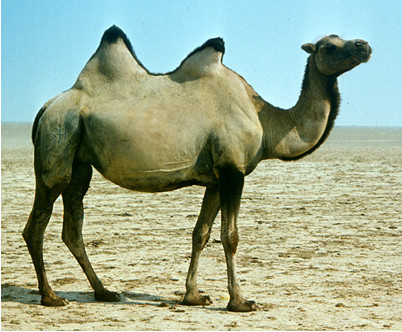
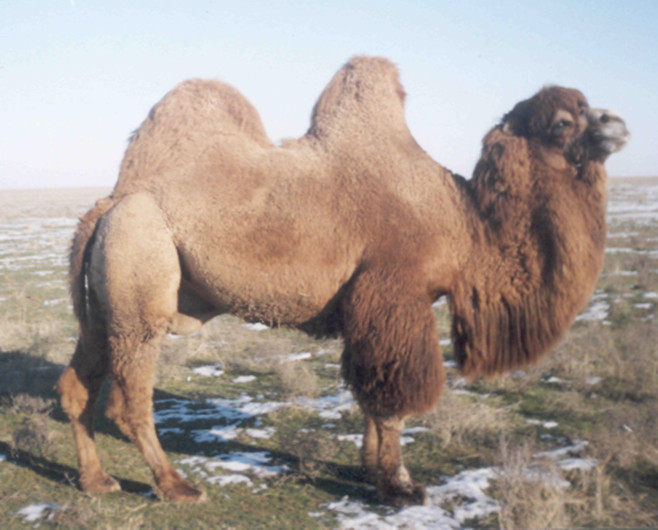
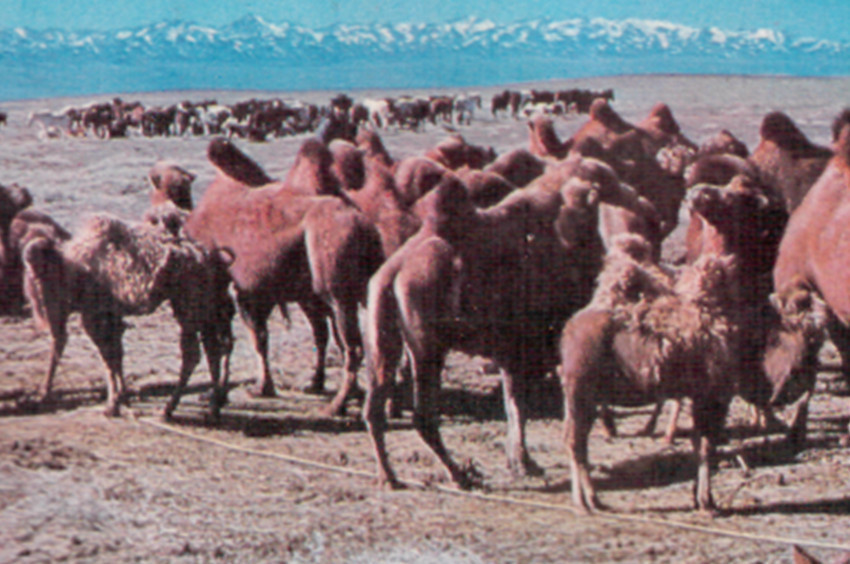
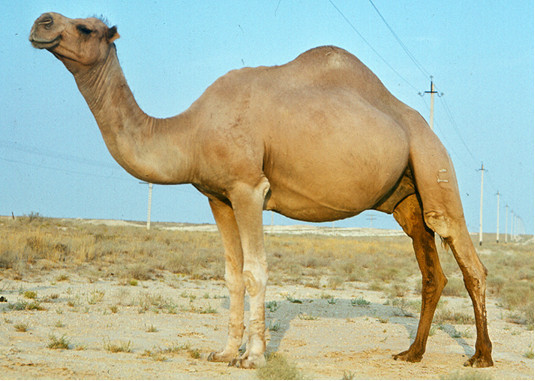
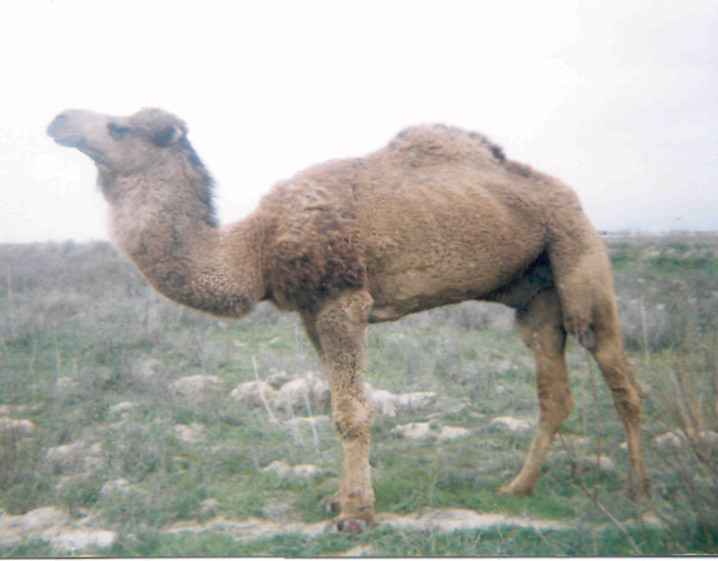





































































Комментарии (0)